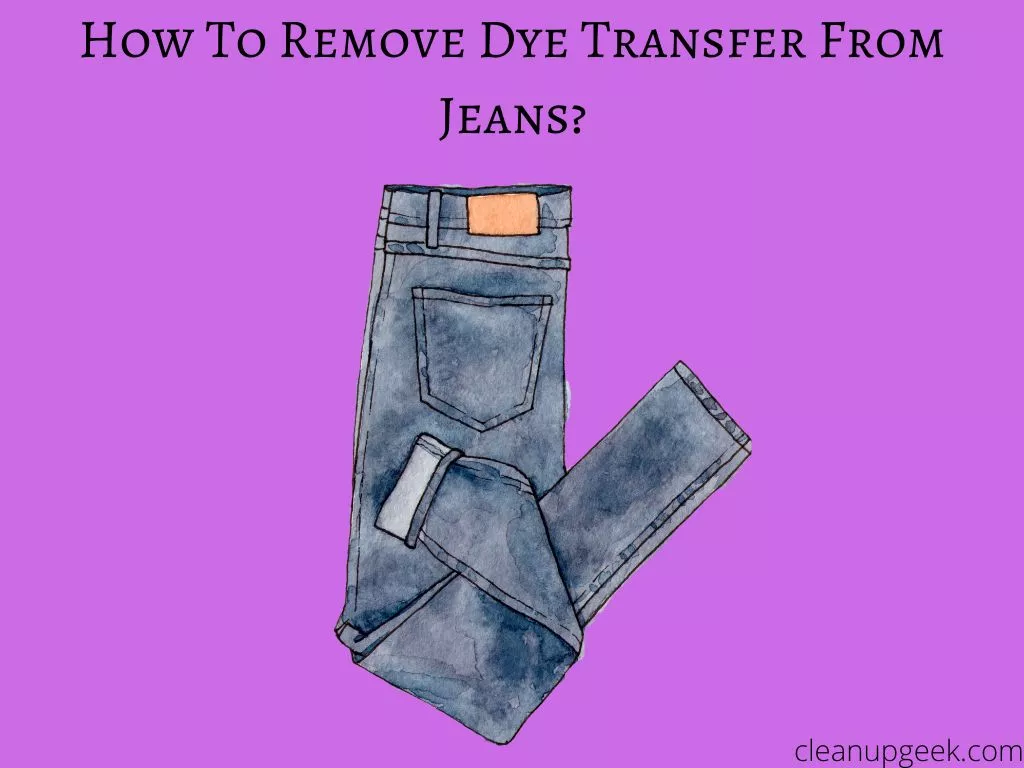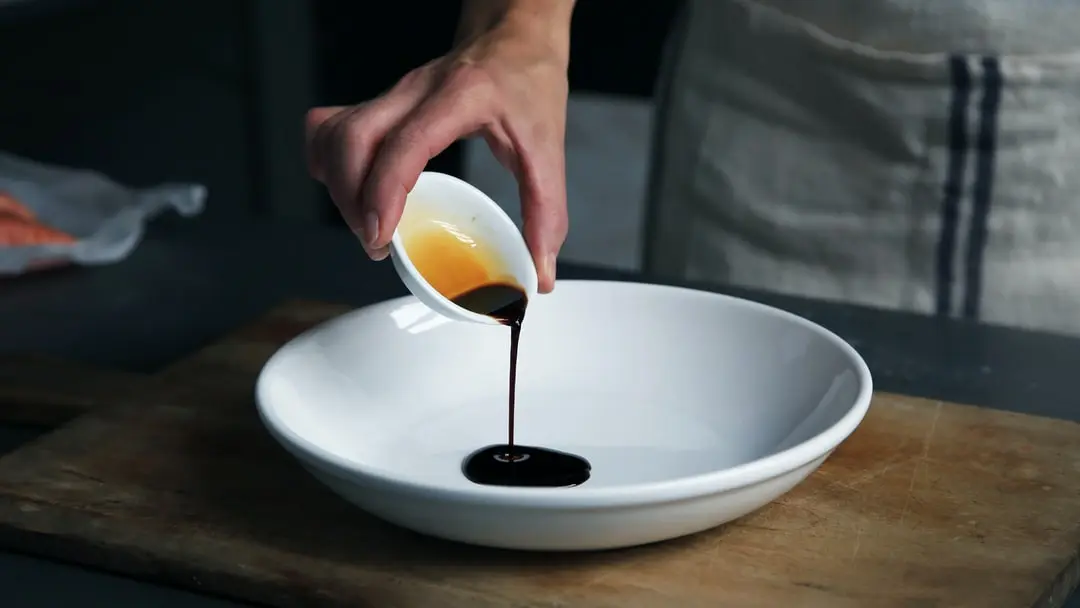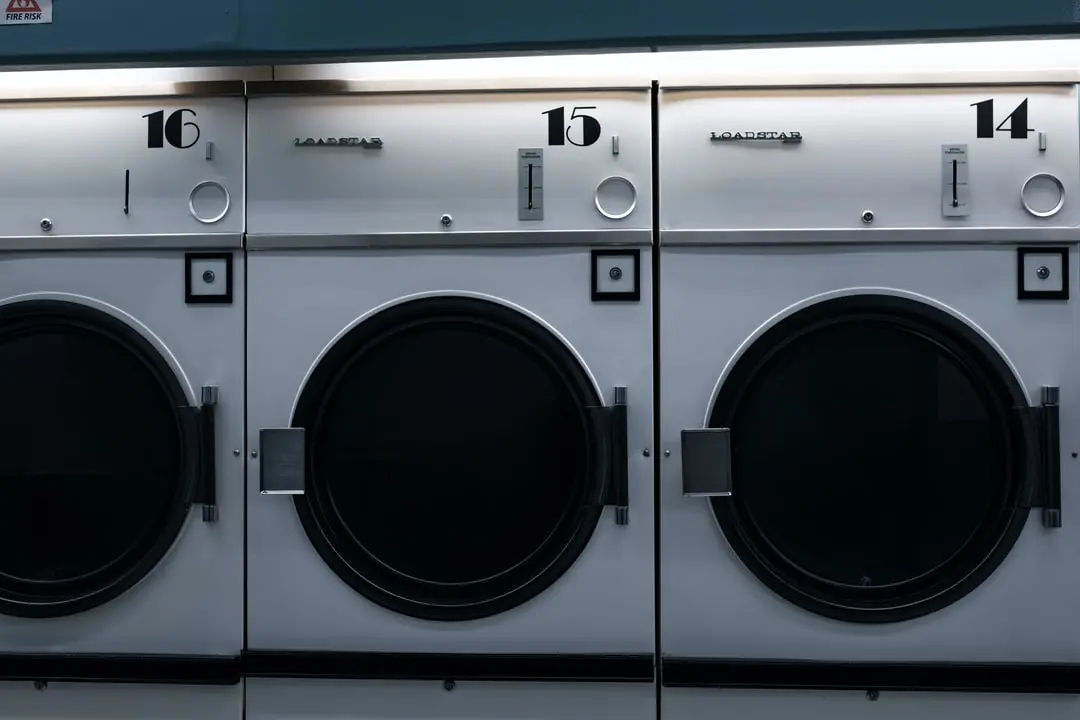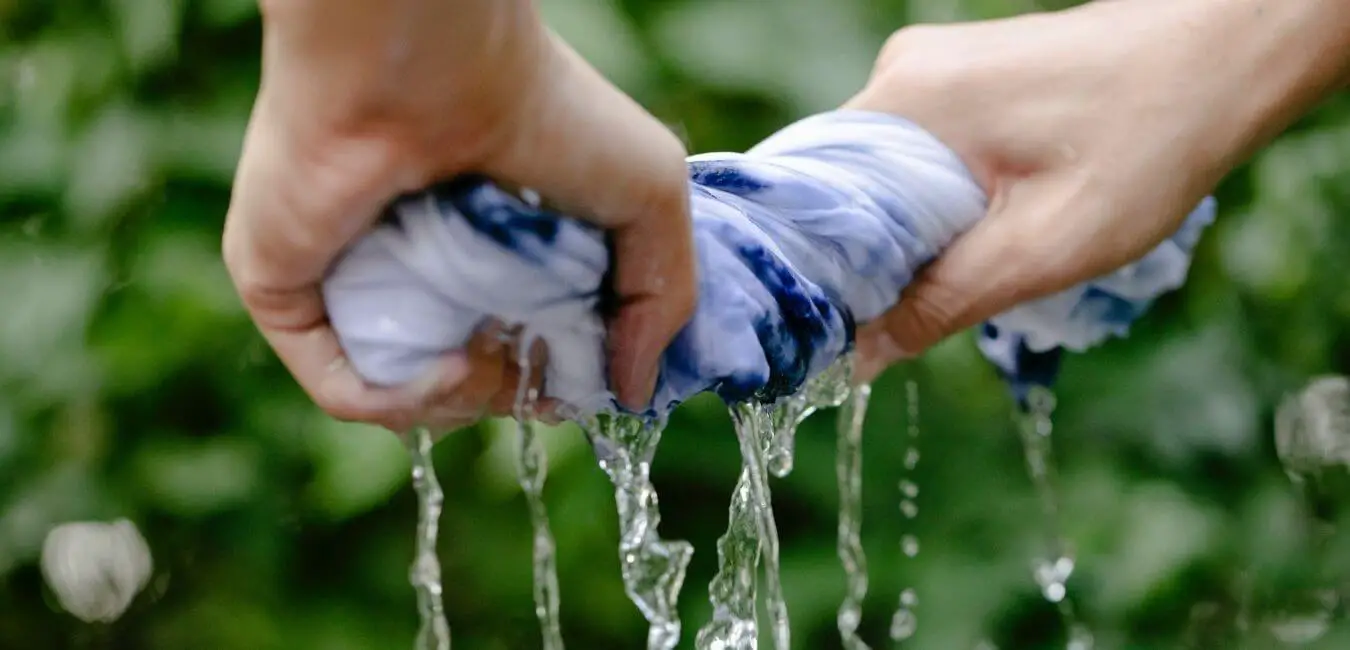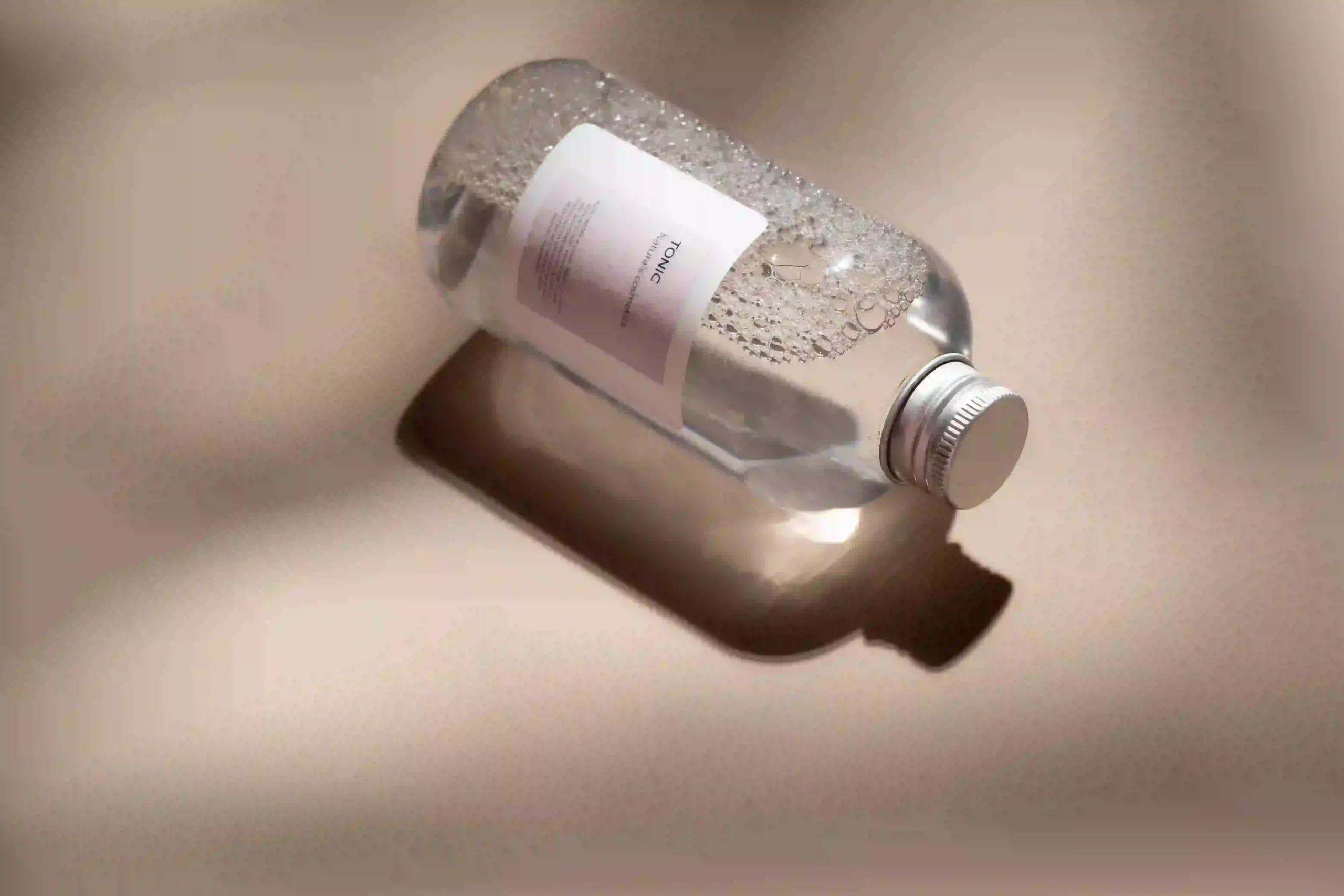How do you remove dye transfer from jeans? Jeans are one of the most commonly worn clothing items. Unfortunately, they can also be one of the most difficult items to care for. There are a number of ways that dye transfer can occur on jeans, and each person’s experience with dye transfer will be different.
The dye transfer phenomenon happens when dye from one article of clothing rubs off onto another article of clothing. It can be frustrating because it can be difficult to remove the stain. This guide will outline several methods for removing dye transfer from jeans.
But how do you remove dye transfer from jeans using commercial and natural products? And what are the best ways to prevent dye transfer from happening? Keep reading to find out the answers to these questions and many more.
What is Dye Transfer and Its Causes?

Dye transfer is the transfer of dye from one garment to another. This can be caused by several factors, including the use of incompatible dyes, the use of different fabrics in the same garment, and poor laundering habits. In most cases, dye transfer is easy to remove if you treat it early.
One common type of dye transfer occurs when two different types of fabric are washed together. For example, if you combine a white cotton T-shirt with a blue denim skirt in a wash, the blue dye from the skirt will likely transfer to the T-shirt. This can be prevented by washing fabrics of similar colors together.
Poor laundering habits can also lead to dye transfer. Dirty clothes tend to contain more bacteria, which can cause color bleeding. In addition, dirty clothes often contain more oil and sweat, which can create a breeding ground for bacteria.
If you notice any signs of color bleeding or dye transfer on your clothing, take action right away. Cleaning methods vary depending on the type of stain and the severity of the situation. However, most stains can be remedied with some common household items.
What Are the Signs of Dye Transfer?

It’s not always easy to tell when dye transfer has occurred, but there are a few key signs to watch out for.
One of the most common indications is when the dye from one item of clothing starts to show on another piece. This can often be seen on denim jeans, where the blue dye from the jeans may start to transfer onto lighter-colored items that are worn close to them.
Another indication is when fabrics start to look faded or discolored, as this can be a sign that the dye has started to bleed.
If you suspect that you’re experiencing dye transfer, there are a few things you can do to try and remove it. One method is to soak the affected clothes in cold water and white vinegar for several hours. You can also try using a gentle laundry detergent and hand-washing the clothes in cool water.
Mistakes to Avoid When Removing Dye Transfer From Jeans

When dye transfer occurs, the dye seeps into the fabric of the jeans and can cause them to look faded or even dirty. If you want to remove dye transfer from jeans, there are a few things you need to know in order to avoid making any mistakes.
1. When trying to remove dye transfer, avoid using products that contain harsh chemicals. These chemicals can damage the fabric of your jeans and may even cause them to fall apart completely. Instead, you should use gentle cleaners that are specifically designed for this type of stain removal.
2. Do not use hot water either, as this can set the dye in place. Instead, use cool water and a gentle detergent to help loosen the dye.
3. Do not scrub the affected area, as this can also damage the fabric. Avoid scrubbing or agitation, which can also cause the dye to spread. Instead, use a gentle detergent and cold water to soak the jeans and loosen the dye transfer.
4. Do not use bleach to remove dye transfer from jeans. Bleach can cause the fabric to weaken and deteriorate.
5. Another mistake to avoid is using the wrong type of cleaner. Many people try to remove the dye transfer with regular laundry detergent, but this often doesn’t work and can actually make the problem worse.
6. Another mistake is using too much cleaner. If you use too much cleaner, it can be difficult to rinse out of the fabric and can also cause fading or staining.
7. Another mistake is not letting the jeans soak in the cleaner long enough. Oftentimes, the dye transfer will come off much easier if you let the cleaner soak in for several minutes before rinsing it out.
8. Lastly, don’t give up too easily. The sooner you start working on removing the stain, the easier it will be to remove it completely.
How to Remove Dye Transfer from Jeans Using Household Items

Dye transfer is a common problem when it comes to jeans. The blue dye from the jeans can often transfer to other items in your wardrobe, like shirts or skirts. While this issue can be frustrating, there are ways to remove the dye transfer and keep your wardrobe looking its best. Here are a few tips on how to remove dye transfer from jeans:
Step 1: What You Need?
- Cold water
- Baking soda
- White vinegar
- A bowl
- Laundry detergent
Step 2: The Process
1. Mix baking soda and white vinegar together to form a paste.
2. Apply the paste to the affected area and allow it to sit for no more than 5 minutes.
3. Scrape off the mixture and rinse the affected area with cold water.
Step 3: Washing the Jeans
1. If the stains are still there after applying the baking soda and white vinegar mixture, wash the jeans normally.
2. Add 1 cup of white vinegar to the rinse cycle.
Step 4: Drying the Jeans
1. Do not dry the jeans in the dryer. The heat of the dryer can damage the fabric of your jeans. Instead, hang them to air dry.
2. If the stains are still there after washing the jeans, then it’s time to use a commercial product that is specifically designed to remove dye transfer. These products can help you restore your jeans back to their glory.
How to Remove Dye Transfer from Jeans Using Commercial Products

When dye transfer occurs on jeans, it can be a challenge to remove the transferred dye. If the dye transfer is particularly difficult to remove, there are several commercial products available that can help remove dye transfer. Here is one of the effective commercial products that can be used to remove dye transfer from jeans:
Rit Color Remover
This product can be found at most fabric stores and comes in powder form. According to Rit Color Remove, the product does not contain chlorine, which means it would not damage your jeans. This product can be used on silk, cotton, linen, wool, rayon, and ramie.
Note: Only use Rit Color Remover on white and colorfast fabrics. If you use the product on fabrics that bleed, it will remove all the color from the fabric. To use the product, follow the guidelines below:
1. After washing the jeans normally, heat water to about 90 degrees Celsius.
2. Add one packet of Rit Color Remove to the hot water.
3. Pour the water into a bucket or container and wet your jeans before adding them to the mixture.
4. Allow the jeans to soak for about 10 to 20 minutes in the mixture. Make sure to stir it every 2 minutes.
5. After the desired time, rinse the jeans in warm water. Then, rinse it in cold water until the water runs clear.
6. Wash your clothes normally with mild detergent. After washing, hang the jeans to air dry.
If you still can’t remove the stain, it’s time to call in the pros. A professional cleaner will be able to remove dye transfer stains from your jeans and restore them to their original color.
What are the Side Effects of Trying to Remove Dye Transfer from Jeans?

When it comes to removing dye transfer from jeans, there are a few different methods that people might try. Some of the more common methods include using bleach, vinegar, baking soda, or commercial products. However, each of these methods has its own set of potential side effects.
One popular method for removing dye transfer is to use bleach. Bleach is effective at removing stains, but it can also damage the fabric of your jeans if used incorrectly. If you use too much bleach to remove dye transfer, you run the risk of damaging the fabric and making the stain worse. Another downside of overusing bleach is that it can cause skin irritation.
Another method for removing dye transfer is to use baking soda. Baking soda is designed to remove dirt and other stains from the surface of your clothes. When you use baking soda incorrectly, it is likely to cause skin irritation and make your jeans become brittle.
Moreover, one method for removing dye transfer from jeans is to use vinegar. Vinegar is effective at cleaning surfaces, including denim. However, vinegar can also damage the fabric if it is applied in high concentrations. Additionally, vinegar can cause a strong odor if it is used incorrectly.
One final method for removing dye transfer from jeans is to use commercial products. Commercial products are great at removing stains and odors from clothes, but they contain harsh chemicals that can damage your clothes.
What are Some Tips for Preventing Dye Transfer in the First Place?
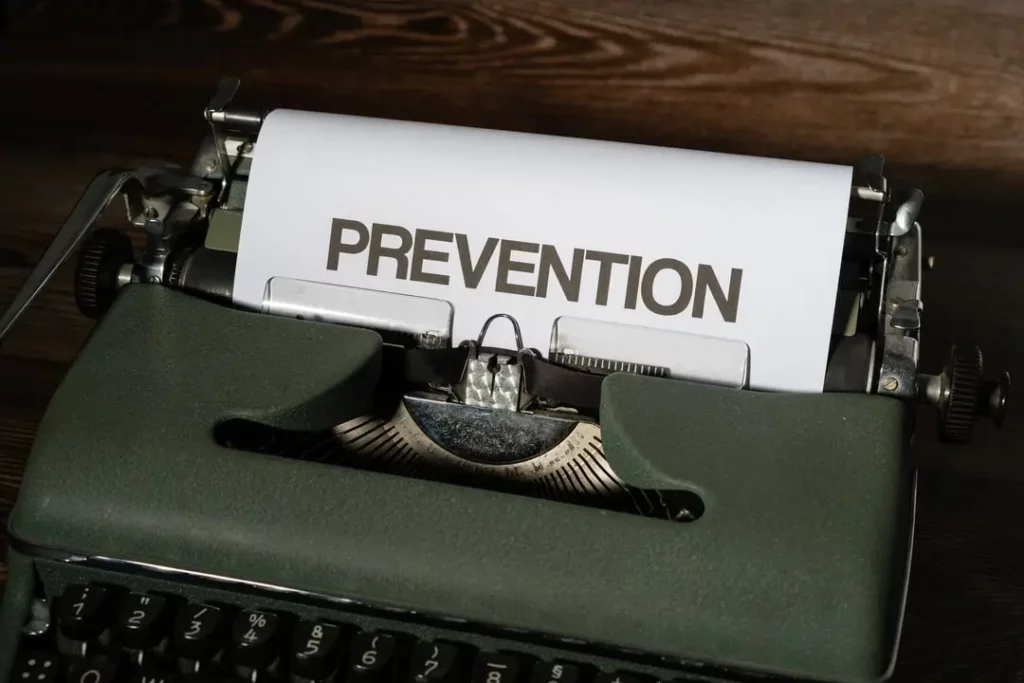
Preventing dye transfer is simple in theory, but can be a little more difficult in practice. Here are a few tips to help prevent the unwanted transfer of color:
1. Make sure to wash new clothes separately from other clothes until they have been washed a few times. This will help remove any excess dye that may be on the fabric.
2. When washing clothes, use cold water and a mild detergent. Hot water and harsh detergents can set the dye in your clothes and make them more difficult to remove later on.
3. Avoid using bleach when washing clothes, as it can also cause dye transfer. If you must use bleach, be sure to dilute it according to the instructions on the bottle. Only use bleach whenever possible, for example, to remove dye transfer.
4. To help prevent dye transfer, avoid washing dark clothes with light colors. The dye from the dark clothes can easily transfer onto the lighter clothes, leaving them with an unwanted tint. If this is unavoidable, be sure to wash the clothes separately and use a gentle cycle.
5. Another way to help reduce dye transfer is to turn garments inside out before washing. This will help protect any delicate fabrics from becoming stained with different colors. Additionally, it’s important to avoid using fabric softener when washing colored clothing.
Finally, if you do notice any dye transfer happening, try to treat the affected area as soon as possible. One way to do this is by using a stain remover or bleach.
Check out our blog articles for free, which can help you to keep yourself and yourself clean always!
Final Thoughts
If you do find that your jeans have picked up some of the dye from a neighboring garment, there are a few ways to remove it.
One popular method is to use vinegar as a stain remover. Simply soak the affected area in vinegar for a few minutes before washing as usual. Another option is to use baking soda. Mix baking soda with water to form a paste, and then apply it to the stained area. Let it sit for about 30 minutes before washing off with water.
Regardless of the method used, always test the cleaner in an inconspicuous area before using it on stained jeans. By following the steps listed above in this article, you can remove dye transfer stains from jeans and restore them to their former glory. Thanks for your time!
